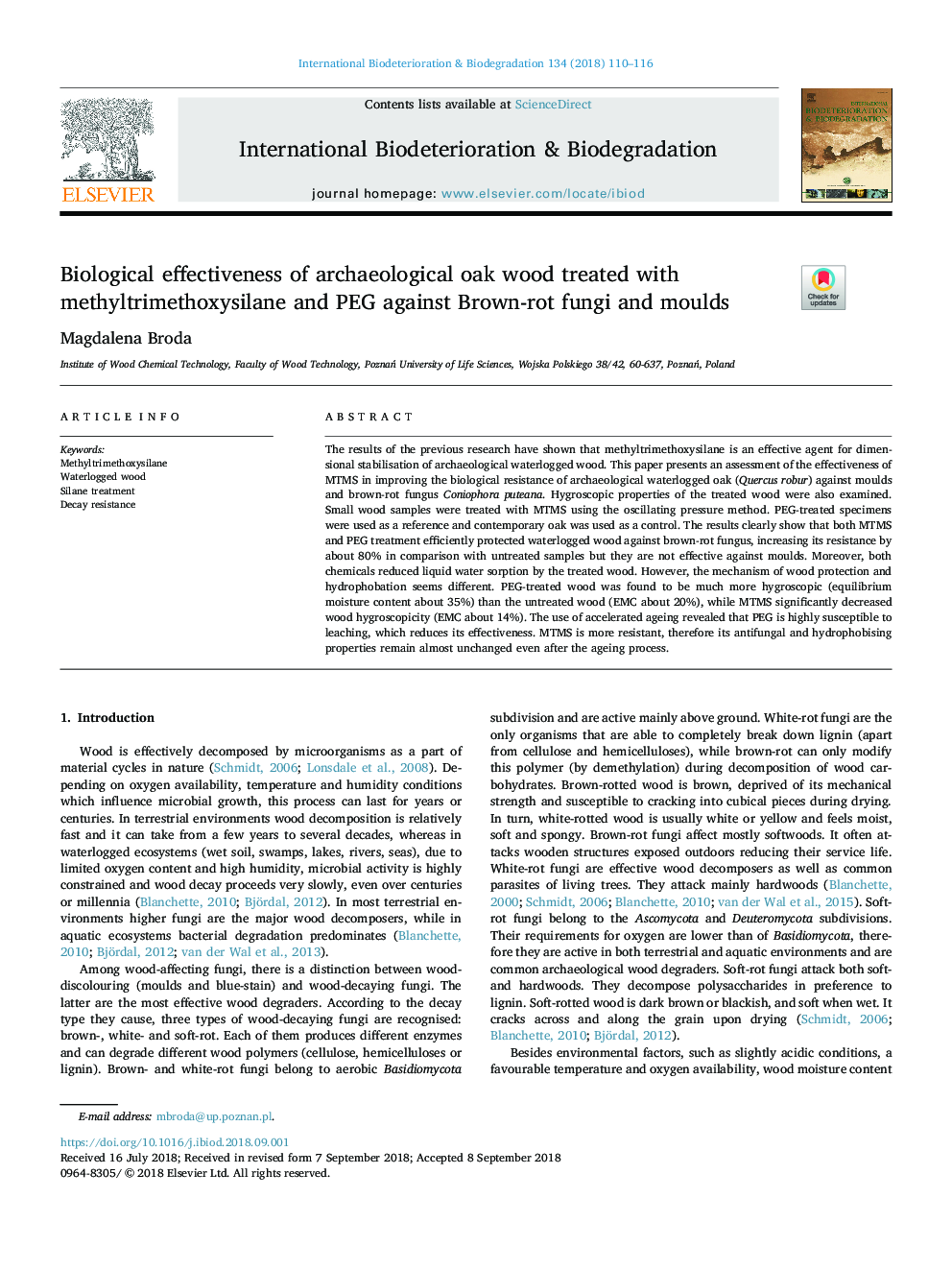| کد مقاله | کد نشریه | سال انتشار | مقاله انگلیسی | نسخه تمام متن |
|---|---|---|---|---|
| 10107120 | 1616283 | 2018 | 7 صفحه PDF | دانلود رایگان |
عنوان انگلیسی مقاله ISI
Biological effectiveness of archaeological oak wood treated with methyltrimethoxysilane and PEG against Brown-rot fungi and moulds
دانلود مقاله + سفارش ترجمه
دانلود مقاله ISI انگلیسی
رایگان برای ایرانیان
کلمات کلیدی
موضوعات مرتبط
علوم زیستی و بیوفناوری
علوم محیط زیست
علوم زیست محیطی (عمومی)
پیش نمایش صفحه اول مقاله

چکیده انگلیسی
The results of the previous research have shown that methyltrimethoxysilane is an effective agent for dimensional stabilisation of archaeological waterlogged wood. This paper presents an assessment of the effectiveness of MTMS in improving the biological resistance of archaeological waterlogged oak (Quercus robur) against moulds and brown-rot fungus Coniophora puteana. Hygroscopic properties of the treated wood were also examined. Small wood samples were treated with MTMS using the oscillating pressure method. PEG-treated specimens were used as a reference and contemporary oak was used as a control. The results clearly show that both MTMS and PEG treatment efficiently protected waterlogged wood against brown-rot fungus, increasing its resistance by about 80% in comparison with untreated samples but they are not effective against moulds. Moreover, both chemicals reduced liquid water sorption by the treated wood. However, the mechanism of wood protection and hydrophobation seems different. PEG-treated wood was found to be much more hygroscopic (equilibrium moisture content about 35%) than the untreated wood (EMC about 20%), while MTMS significantly decreased wood hygroscopicity (EMC about 14%). The use of accelerated ageing revealed that PEG is highly susceptible to leaching, which reduces its effectiveness. MTMS is more resistant, therefore its antifungal and hydrophobising properties remain almost unchanged even after the ageing process.
ناشر
Database: Elsevier - ScienceDirect (ساینس دایرکت)
Journal: International Biodeterioration & Biodegradation - Volume 134, October 2018, Pages 110-116
Journal: International Biodeterioration & Biodegradation - Volume 134, October 2018, Pages 110-116
نویسندگان
Magdalena Broda,